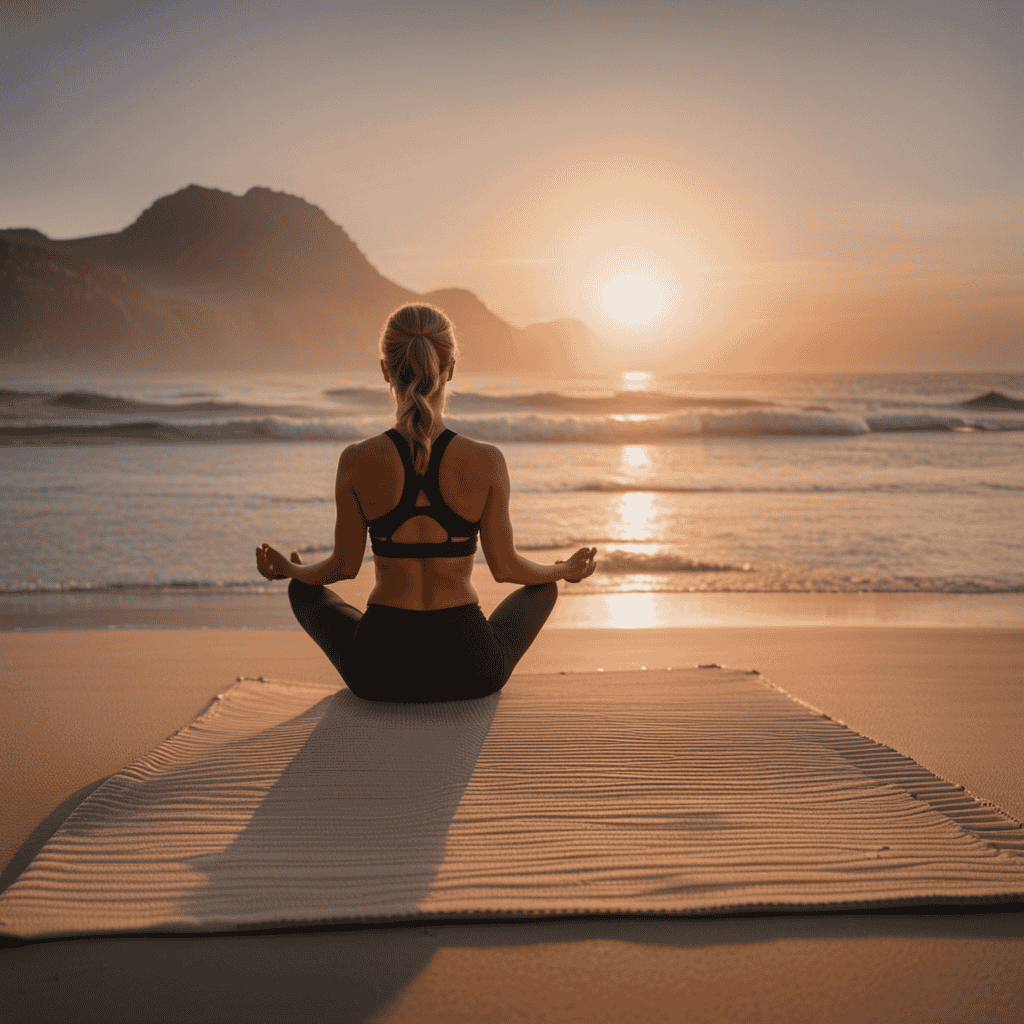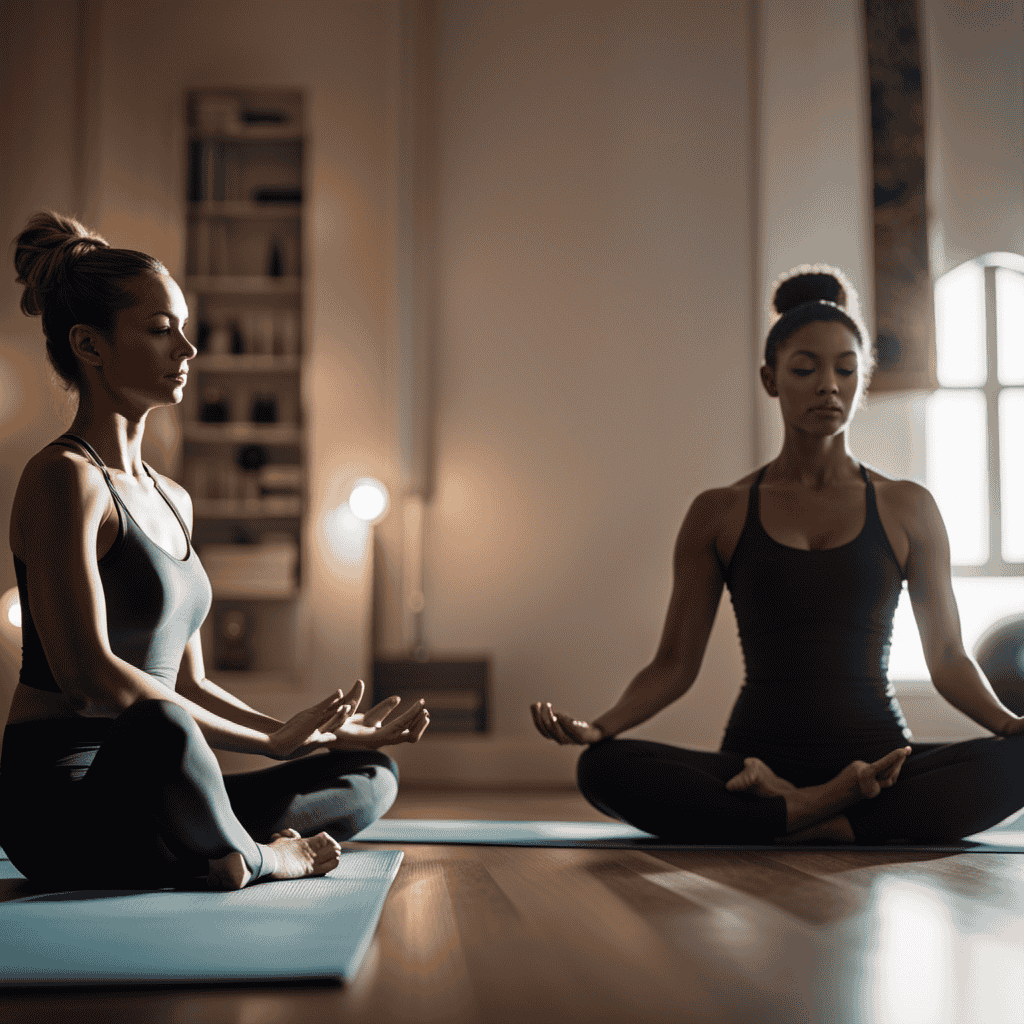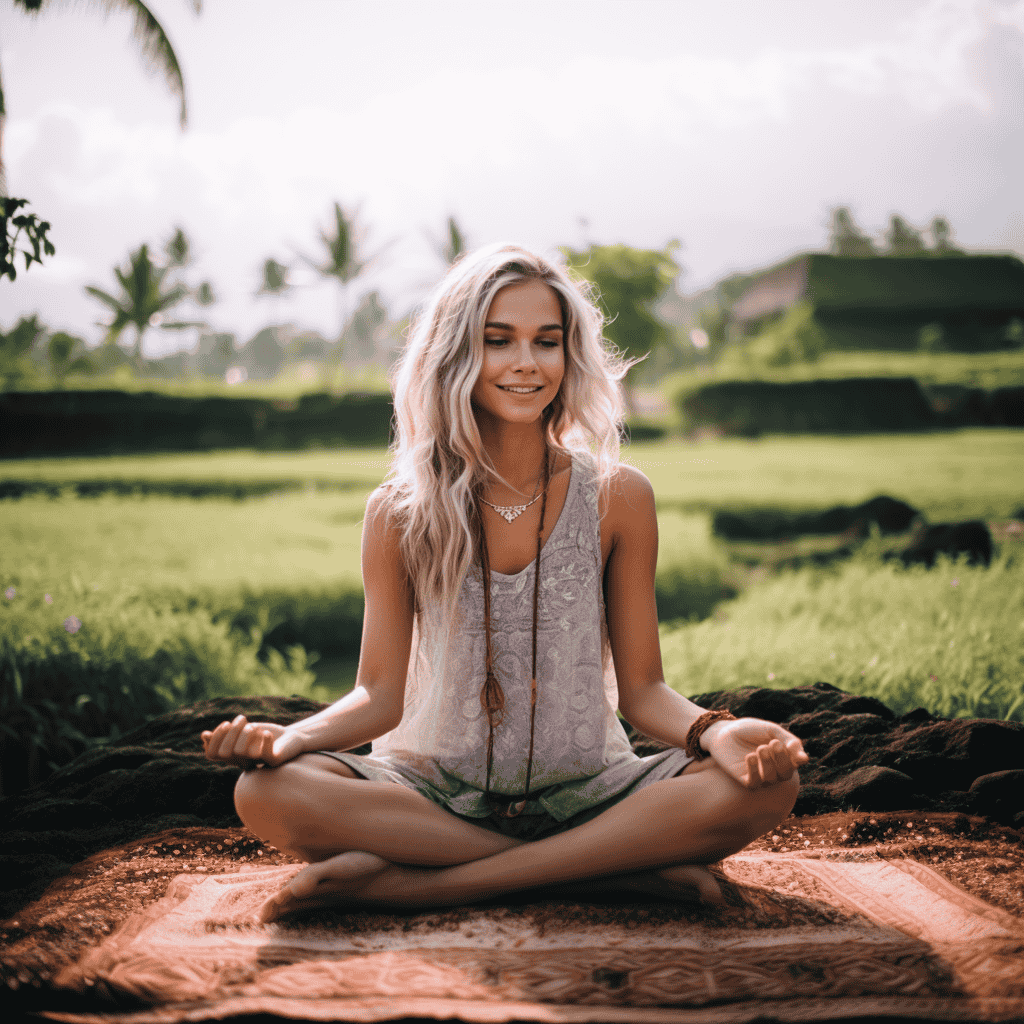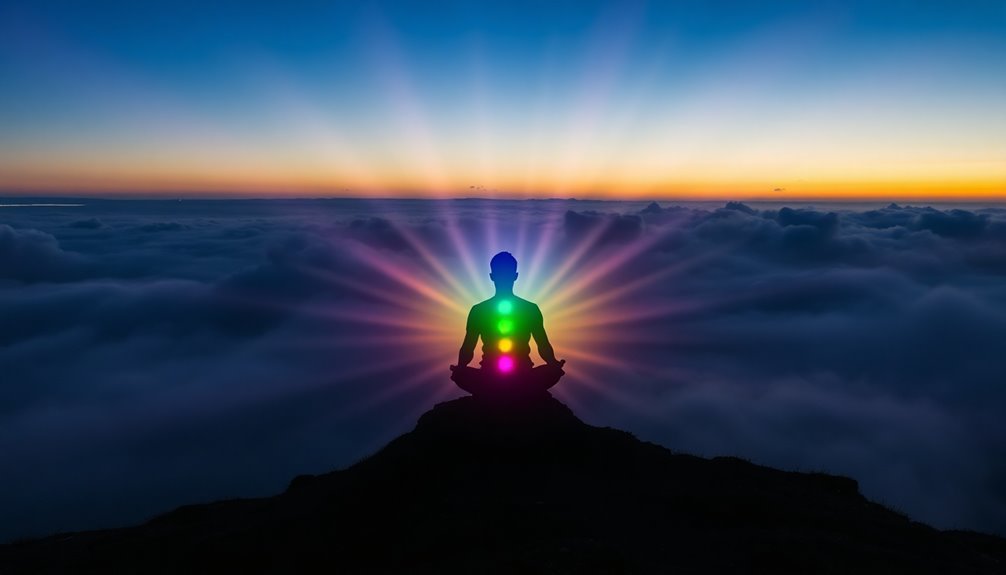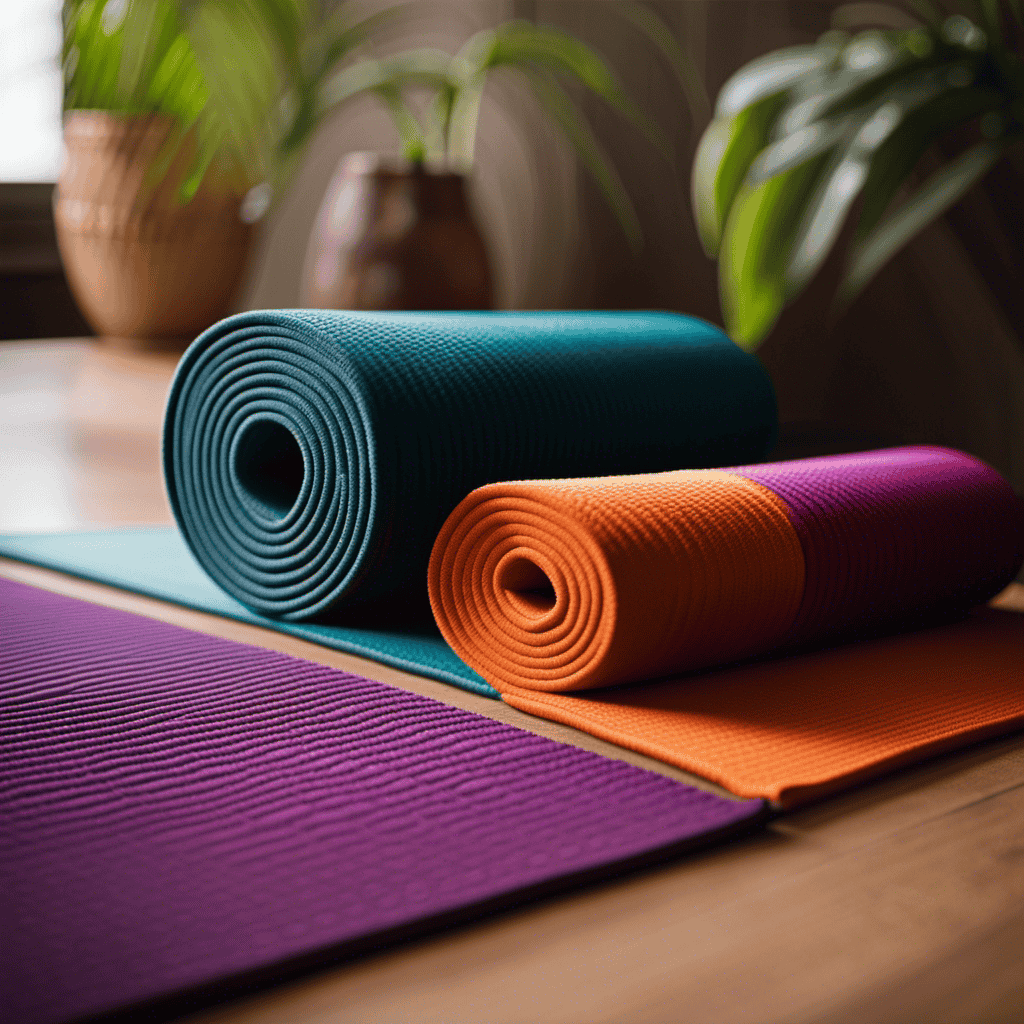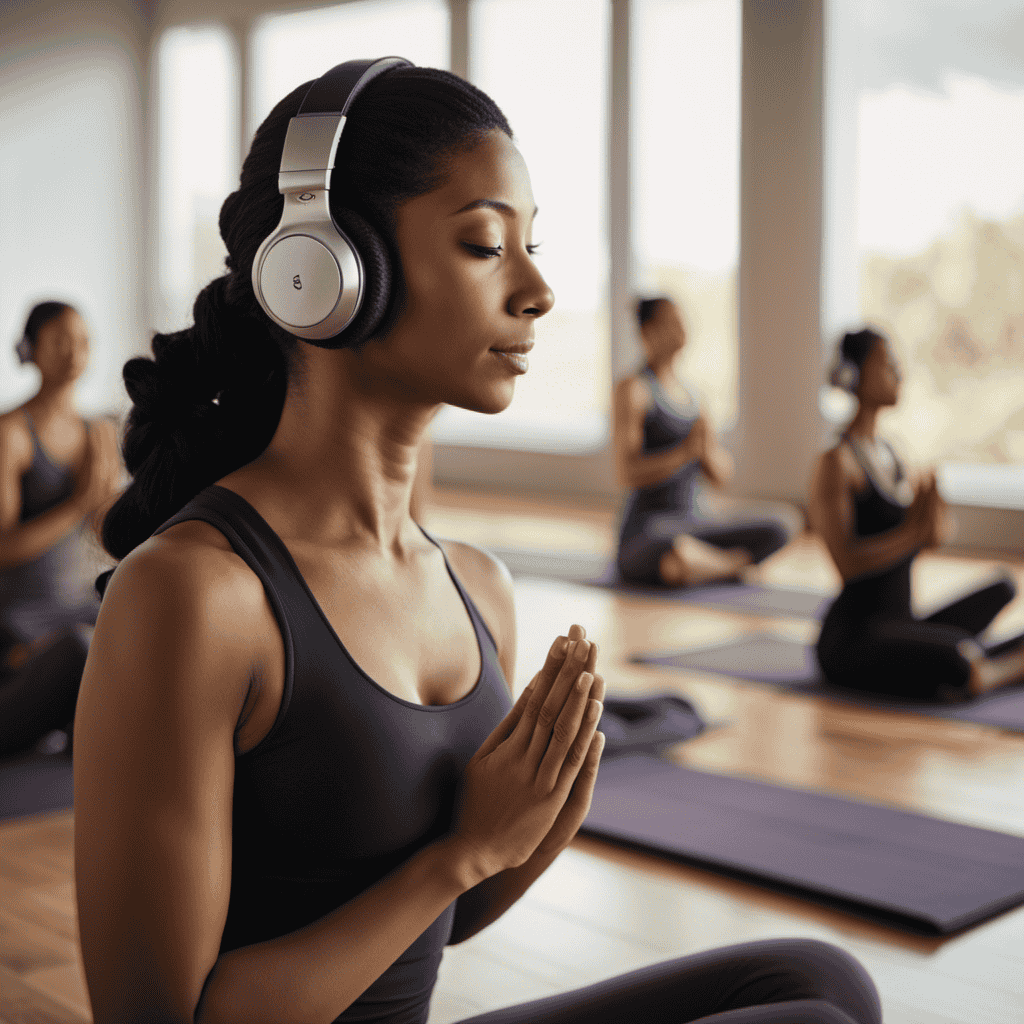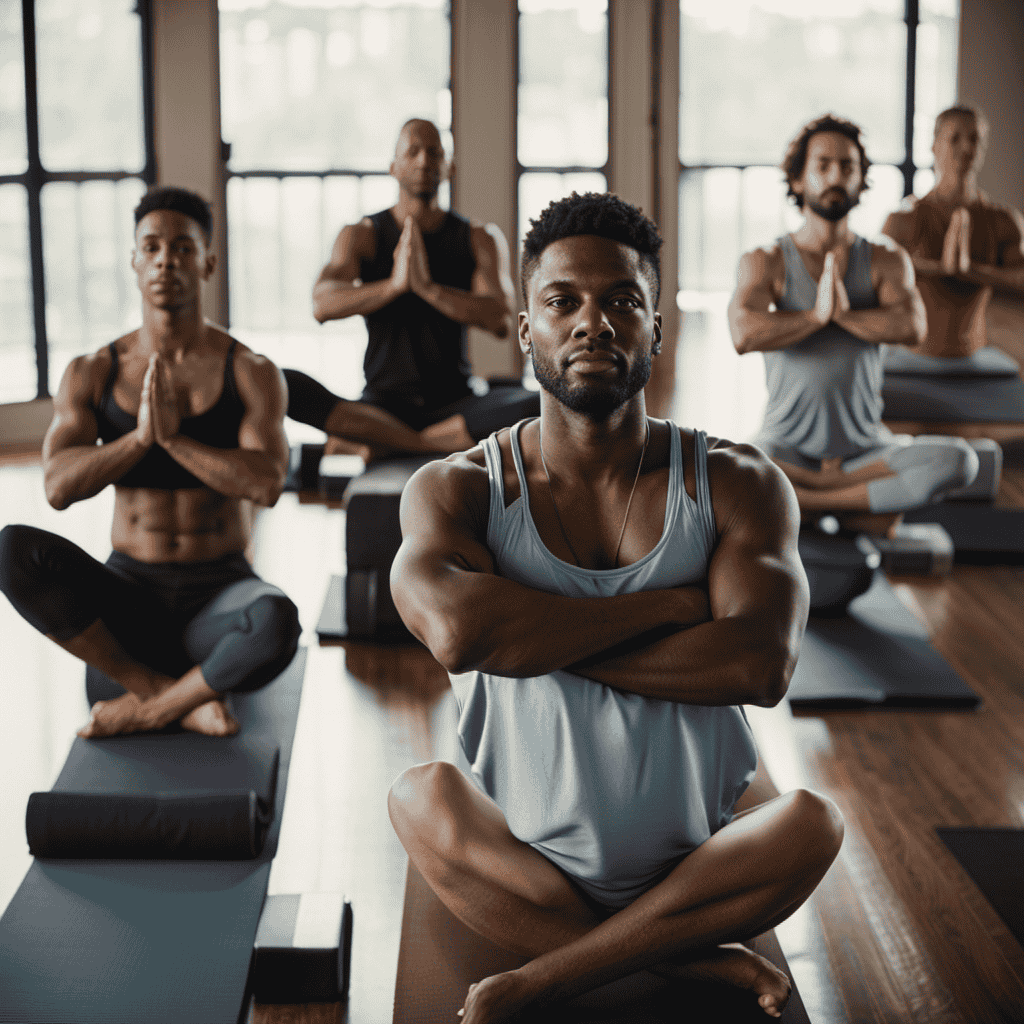Are you fed up with carrying a bulky yoga mat with you wherever you go? Well, I have some exciting news for you! Practicing yoga on the go is now more convenient than ever with mat-free options. It may seem like a long shot, but believe me, it’s achievable.
Not only does this method offer a range of benefits, but it’s also a cost-effective alternative to buying a mat. So, get ready to roll out your virtual mat as we dive into the world of mat-free yoga and discover some helpful tips along the way.
Key Takeaways
- Increased stability and balance
- Improved proprioception and body awareness
- Greater focus and concentration
- Enhanced adaptability to different environments
Yoga without a mat
I find that doing yoga without a mat can be a convenient and cost-effective alternative.
Mat-free yoga challenges can arise when practicing outdoors or in different environments. However, there are various tips and tricks that can make it easier.
One helpful tip is to modify poses to accommodate the lack of a mat. For example, widening your feet in Downward Dog can provide better weight distribution and stability.
Another tip is to use props like blankets or yoga blocks to provide support and cushioning. They can be used under your arms in Cobra pose or under your knees in Cat-Cow pose for added comfort.
Practicing yoga without a mat allows for greater flexibility and adaptability, and with these tips, it can be a successful practice anywhere.
Benefits of mat-free practice
Engaging in a mat-free practice allows for increased stability, improved body awareness, and enhanced focus and concentration.
Without the use of a mat, you are able to challenge your balance and stability in a different way, as you rely solely on the strength of your muscles to support your body. This increased stability not only helps to prevent injuries, but also allows you to hold poses for longer periods of time, deepening your practice.
Additionally, practicing without a mat improves proprioception, which is your body’s ability to sense its position in space. This heightened body awareness can help you to better align your body in each pose, leading to a more effective and efficient practice.
Modifying poses
Modifying poses without a mat allows for greater adaptability and customization of my yoga practice. Whether I’m a beginner or more experienced, I can easily modify poses to suit my skill level and needs. By incorporating mindfulness into my mat-free practice, I can focus on the sensations in my body and make adjustments accordingly.
For example, in Downward Dog, I can widen my feet for better weight distribution and stability. To make Cobra pose easier, I can place a blanket or towel under my stomach for support. Cat-Cow pose can be done on the floor without any modifications.
Modifying poses without a mat allows me to listen to my body and make the necessary adjustments to ensure a safe and effective practice.
Creating a makeshift mat
Creating a makeshift mat allows me to have a stable surface for my yoga practice without needing to invest in a traditional mat. Using a towel as a makeshift mat offers several benefits.
- Improved grip: The texture of the towel provides better traction, preventing slipping during poses.
- Increased comfort: The softness of the towel adds cushioning and support, making the practice more comfortable.
- Portability: A towel can be easily folded and carried, allowing me to practice yoga on different surfaces like grass or sand.
- Hygiene: By using my own towel, I can ensure cleanliness and avoid sharing mats with others.
When practicing yoga on different surfaces, it’s important to keep these tips in mind:
- Choose a surface that is level and smooth to prevent injuries.
- Adjust your balance and stability according to the surface you’re on.
- Take extra care on uneven or slippery surfaces, modifying poses if necessary.
- Always listen to your body and make adjustments as needed to ensure a safe and effective practice.
Using props
Using props during my yoga practice enhances my stability and allows me to deepen my poses. Props for beginners are a great way to support and modify poses when practicing yoga without a mat. They provide additional comfort and help in maintaining proper alignment.
Blankets, yoga blocks, and bolsters can be used as alternative surfaces for yoga on the go. For example, placing a blanket under my knees during Cat-Cow pose provides extra cushioning and support. Using a yoga block under my arms in Cobra pose helps to open my chest and improve my posture.
Props like these give me the confidence to explore and challenge myself in different environments without the need for a traditional yoga mat. They are portable, versatile, and essential tools for a mat-free yoga practice.
Frequently Asked Questions
Is it safe to practice yoga without a mat?
Yes, it is safe to practice yoga without a mat. Practicing on different surfaces can enhance balance and stability. To maintain grip and prevent slipping, focus on engaging the muscles of the hands and feet and consider using a towel or blanket for better traction.
Can practicing yoga without a mat affect my balance and stability?
Practicing yoga without a mat can actually improve balance and stability. It emphasizes the importance of grip and traction, as you have to rely on your body’s strength to hold poses on different surfaces. This can enhance your overall stability and body awareness.
What are some alternative options to using a towel or blanket as a makeshift mat?
While using a towel or blanket as a makeshift mat is a common option, there are other alternatives for mat-free yoga practice. Some options include using a non-slip rug or carpet, practicing on a grassy surface, or using a foam exercise mat. These alternative options allow for the benefits of practicing yoga in different environments while maintaining stability and balance.
Are there any specific poses that are difficult to modify without a mat?
Modifying poses without a mat can pose challenges on different surfaces. Poses like Downward Dog and Warrior pose may require extra stability and balance. Using props like yoga blocks can help with modifications.
Can using props help compensate for not having a mat during yoga practice?
Using props for stability can help compensate for not having a mat during yoga practice. Props like blankets, yoga blocks, and bolsters can provide support and enhance poses. However, practicing yoga without a mat has both pros and cons.
Conclusion
In the realm of yoga, the mat may be absent, but the possibilities are endless. Engaging in mat-free practice offers a wealth of benefits, from increased stability to heightened body awareness.
By modifying poses and creating makeshift mats, we can adapt to any environment and find our flow. With the help of props, we can achieve proper alignment and support.
So, whether you’re traveling or simply seeking a cost-effective alternative, remember that yoga on the go is within reach. Embrace the freedom, find your balance, and let your practice unfurl like a serene river, flowing effortlessly.
